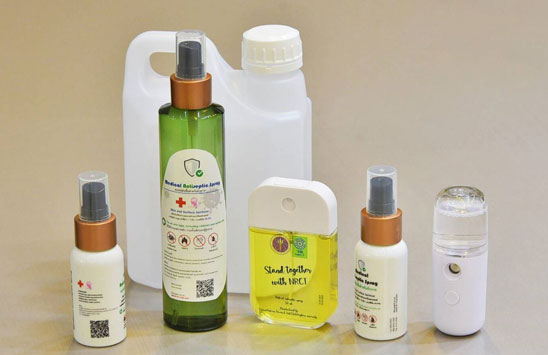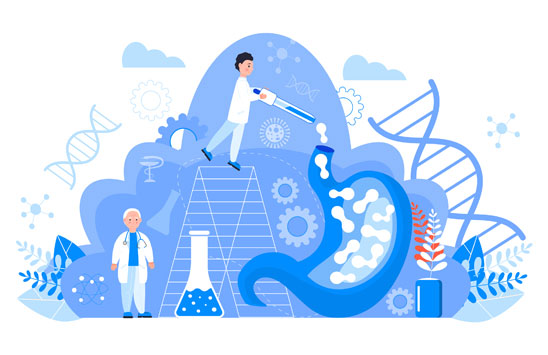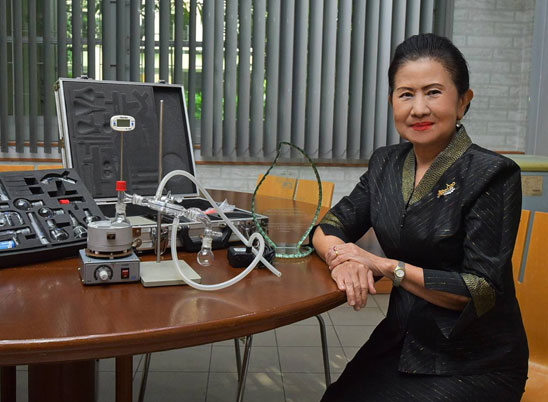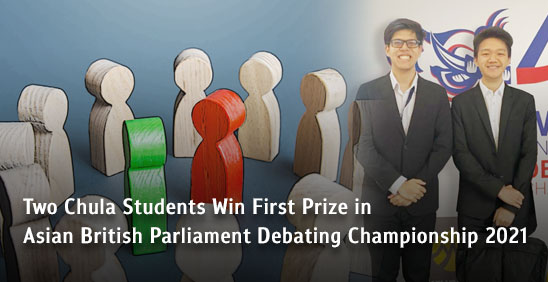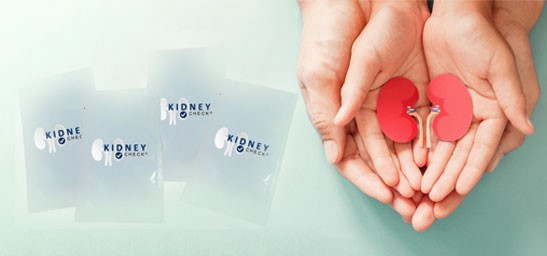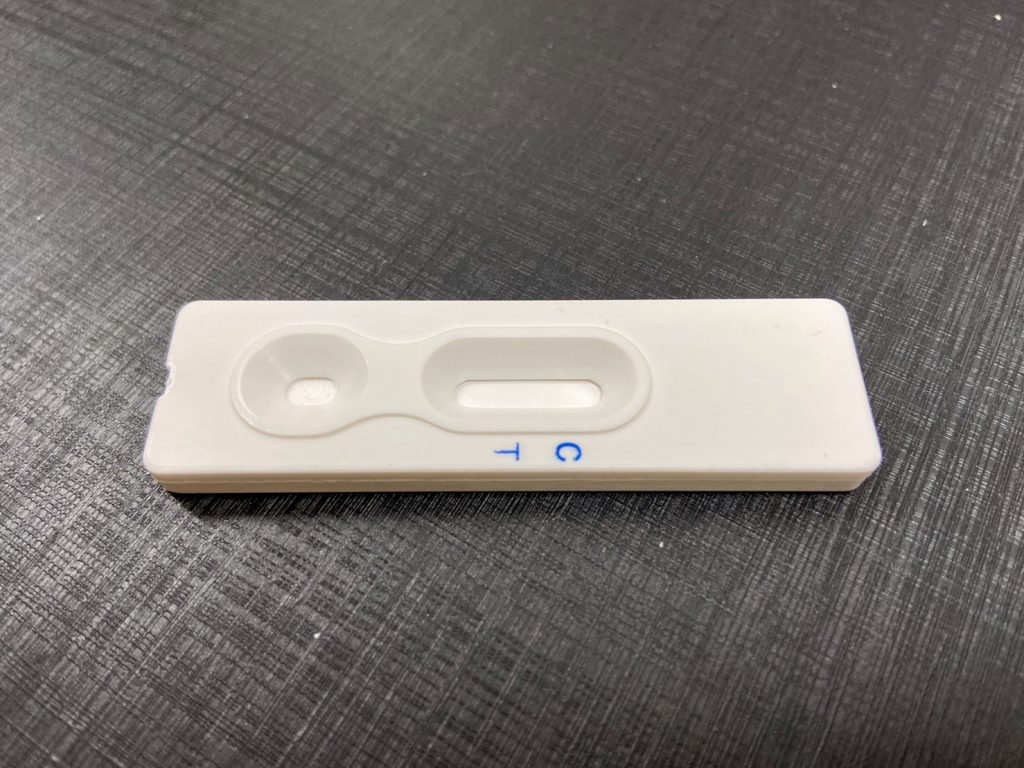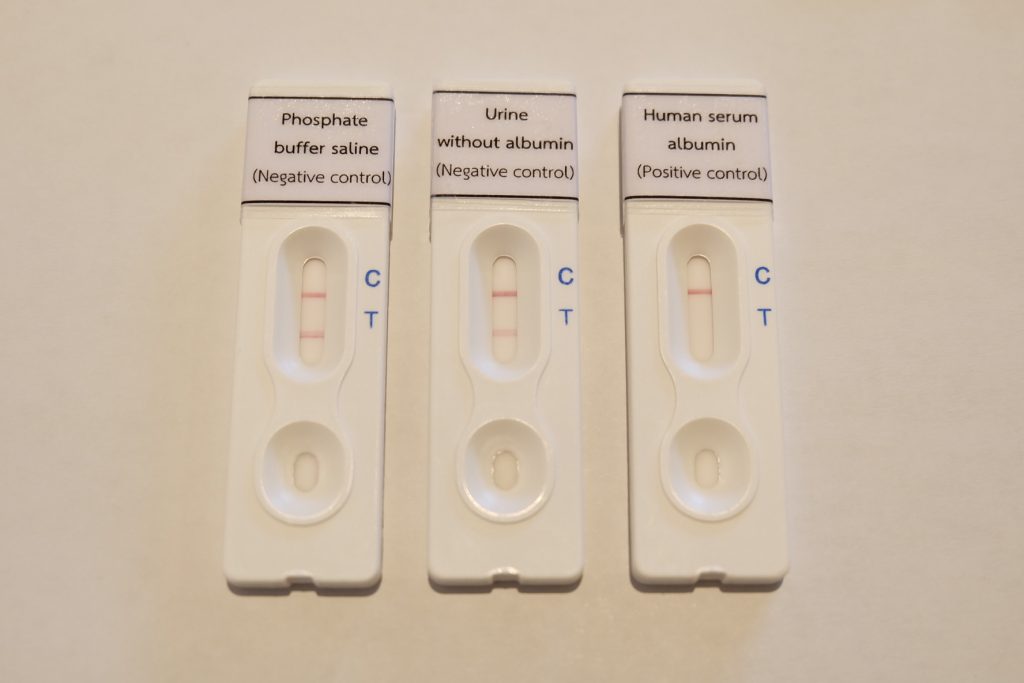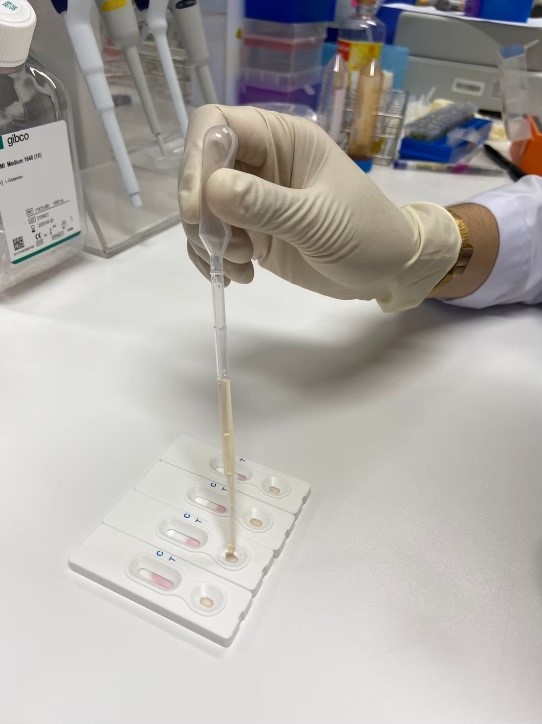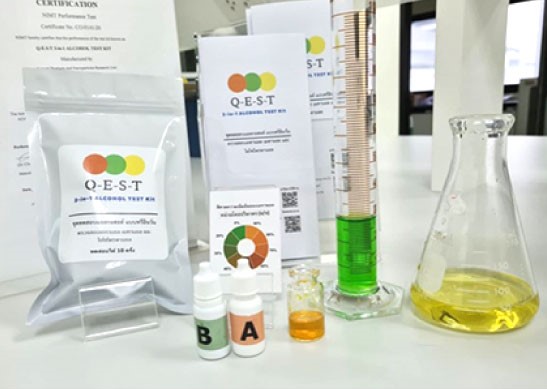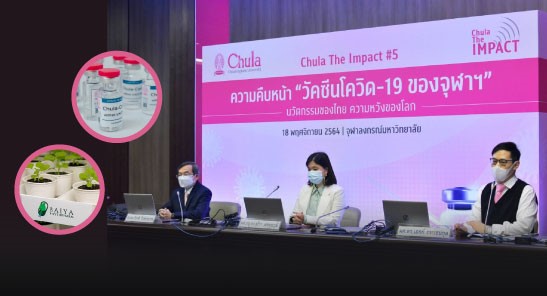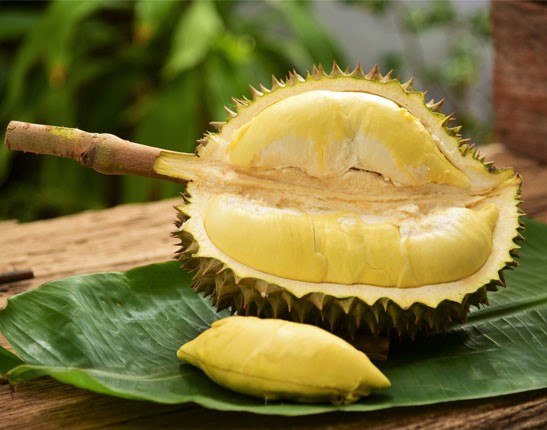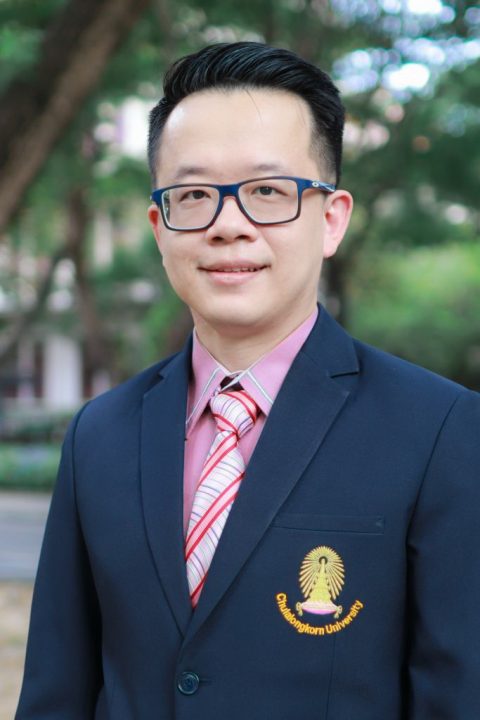Professor Dr. Supawan Tantayanont, one of the 2021 Distinguished Women in Chemistry or Chemical Engineering awarded by the International Union of Pure and Applied Chemistry (IUPAC), opens up about her inspiration in the development of chemistry courses that merit this international recognition, how she maintains her work-family-life balance, as well as her efforts to promote the younger generation’s interest in science education throughout Thailand and ASEAN.
Since the United Nations designated the year 2011 as the International Year of Chemistry to mark the 100th anniversary of Madame Marie Curie — the first female scientist to be awarded the Nobel Prize in 1911–, IUPAC started to present the Distinguished Women in Chemistry or Chemical Engineering awards to women with outstanding achievements in the field from around the world.
Thai women also stand tall among their peers from other nations. In 2011, Her Royal Highness Princess Chulabhorn became the first Thai to receive the award in its initial year.
A decade later, in 2021, Thailand, once again, is made proud when Professor Dr. Supawan Tantayanont, Department of Chemistry, Faculty of Science, Chulalongkorn University, President of the Science Society of Thailand Under the Patronage of His Majesty the King, and President of the Council of Science and Technology Professionals, has been chosen for this prestigious award.
“It is rare that women chemists rise to the forefront of fame and recognition, even in developed countries, hence, the inception of this award. The judging criteria are the body of research, leadership, and contribution to global society,” Prof. Dr. Supawan, as a woman who holds many key positions in both local and international science organizations, explained the rationale behind the award that she just received based on her 40 years of dedication to the research and development of chemistry education, creation of model science teachers, and promotion of science studies among young people in Thailand, ASEAN countries, and around the world.
The Starting Point on the Path of Chemistry: a Small Lab Kit
One important research that has brought international fame to Prof. Dr. Supawan is the development of a Small-Scale Chemistry Laboratory aka. Small Lab Kit that received four patents and petty patents under Chulalongkorn University.
Prof. Dr. Supawan talked about the origin of the Small Lab Kit saying that, “after receiving a scholarship to study in the United States, I came back to Chula to Chemistry Laboratory subjects. In those days, the labs were at the old Chemistry 1 Building (now the Art and Culture Building), and the Chemistry 3 Building (now the University Museum Building). The number of first-year students from various science faculties who came to study General Chemistry Laboratory, and Organic Chemistry Laboratory at the Department of Chemistry was steadily increasing to more than 3,000 a year. So, the labs became very crowded, and the safety standards were not as good. And we were interested in finding ways to create safer chemistry labs while maintaining the same curriculum.”
Based on these challenges, Prof. Dr. Supawan has continuously been working on improving the safety of chemistry labs and has initiated the “Safe and Pollution-Reduction Chemistry Laboratory” Project (2000-2002) with funding from Thailand Research Fund (now Thailand Science Research and Innovation or TSRI) in collaboration with 14 researchers from seven institutions, namely Chulalongkorn University, Mahidol University, Srinakharinwirot University, King Mongkut’s University of Technology Thonburi, Chiang Mai University, Khon Kaen University, and the Prince of Songkla University.
“Initially, we were trying to develop safer experiments by adapting those used to teach at both domestic and international universities and designing new methods. We also looked for low-hazard substances to replace old ones and tried to reduce the size of the experiments that will still produce good results, while maintaining students’ learning style, and letting them use the same equipment and glassware. But we found that this still did not meet our main needs.”
The research team agreed on microscale chemistry or small-scale chemistry technique that uses a minimal amount of chemicals in an experiment, but still, yields observable results.
“From the same experiment that requires hundreds of milliliters of chemicals, we reduced the amount to only 1-5 ml or drops, which equaled hundreds and thousand times reduction, while reducing the risk of chemical exposure by hundreds and thousands of times as well. This makes experiments increasingly safer with much less hazardous waste to be disposed of,” explained Prof. Dr. Supawan.
When experiments were scaled down, it was necessary to design new steps of experiment, equipment, and tools.
“In general chemistry, most of the experiments use aqueous solution, so plastic utensils used in medical and microbiology fields, readily available in the market, can be used. Experiments in organic chemistry require heat and organic solvents, which will melt the plastic. Therefore, equipment made of glass or other heat-resistant materials must be used.”
Prof. Dr. Supawan further explained that although small glassware was already manufactured and sold abroad, the prices were high. There was no suitable heating equipment either. So, the project designed a small set of glassware, heating equipment, complete with other utensils, ready for experiments packed in a carrying bag, called a Small Lab Kit.
“Every equipment design takes into account the efficiency and ease of use, safety, and reduction of waste from the experiments, and can be manufactured locally. For example, in the case of small heating kits, we designed a hotplate and aluminum blocks that act as a heat-conducting medium allowing it to be used with various sizes of small glassware. The kit allows observation of both boiling points and melting points of the elements using only one kit. The glassware was also designed to separate the solvent, and be reused without having to dump it, hence lessening the amount of hazardous waste from the organic chemistry labs.”
The Small Lab Kit is approved by United Nations Educational, Scientific and Cultural Organization (UNESCO), and the detailed directions are published on the UNESCO website. Since 2009, Prof. Dr. Supawan has been invited to lecture and conduct workshops to promote the Small Lab Kit in many countries around the world.
Partnership with the private sector: Dow Chemistry Classroom
The research success led to another crucial project: “Dow Chemistry Classroom“– a collaboration between the Chemical Society of Thailand and Dow Thailand Group (DOW), a global chemical giant, to promote Small Scale Laboratory approach to Chemistry classes in secondary schools.
“I intend to make science learning in schools interesting by allowing the students conduct experiments by themselves. We learned that students are less interested in science due to their lack of a great first impression of science subjects in school and that they rarely have the opportunity to conduct experiments. So, I think if we can disseminate this research to enable schools to teach science experiments, it should make young people more interested in studying science,” Prof. Dr. Supawan shared her inspiration for starting this project in 2002 with the support of the PPA Science Foundation that later developed into “Dow Chemistry Classroom” Project in 2013 and is still continuing on today with support from Dow Thailand Group.
“In the Dow Chemistry Classroom Project, we designed lab kits for schools so that their students can do experiments on their own. This will enable students to have a deeper understanding, learn, observe and remember chemical processes and reactions more deeply than those who only read from textbooks,” said Prof. Dr. Supawan.
At present, the Dow Chemistry Classroom Lab Kits present 8 subjects in General Chemistry at the secondary school level. Each kit is packaged in a compact box containing all the ready-to-use equipment needed to perform about 30 experiments, complete with directions, and ways to handle the remaining chemicals. The kits can be refilled for further experiments because the plastic is durable and will last for more than 10 years.
“We scaled-down the experiments and changed the chemicals to non-hazardous chemicals to comply with Green Chemistry principles. This makes it safer for students and teachers than traditional experimentation methods. In doing so, experiments are less time-consuming and can be completed within the class period, leaving enough time for Q&A, and discussion. The kit also uses less energy, and produces very little waste.”
“Dow Chemistry Classroom” is a low-cost, highly safe chemistry lab kit that can be used in regular classrooms. The price per set is only 300-400 baht, depending on the types of experiment, or around 10 baht per experiment.
“Dow Chemistry Classroom saves cost, labor, and time while making learning more convenient and easier, even during the COVID-19 pandemic in which students have to study online from home. Students can still safely perform scaled-down lab experiments under the supervision of online teachers,” said Prof. Dr. Supawan.
A mission to train science teachers in Thailand and the ASEAN region
The “Dow Chemistry Classroom” project not only designs and produces lab kits that are accessible for schools but also focuses on the training of secondary school science teachers. Up until now, nearly 2,000 science teachers from more than 1,000 schools across the country have received training on how to use the 8 types of small chemistry labs. The teachers have also passed on their knowledge to almost 6,000 other teachers, making it possible for over 150,000 students to learn chemistry through experiments.
Behind her success is the dedication of many people. “Everyone volunteered to help – including the Chemistry Society, friends who teach chemistry in various educational institutions, old students, the private sector, etc. I give great importance to this mission, including fundraising for the procurement of equipment, organizing training for more than 400 teachers a year. These teachers receive an introductory lab kit ready to be used to teach students at their schools based on their direct experience,” said Prof. Dr. Supawan.
In addition to the training, Prof. Dr. Supawan started many activities to monitor and assist science teachers, one of which is a science contest “Dow-CST Award” whose winners receive plaques graciously conferred by HRH Princess Chulabhorn Walailak Akra Rajakumari, and prize money sponsored by Dow Thailand Group. Model science teachers are also selected each year.
“Currently, 84 model teachers from the project are working in all regions across the country. IUPAC has praised the project for continuously inspiring youth in science for the eighth consecutive year,” Prof. Dr. Supawan said with pride and added that in 2021, the Dow Chemistry Classroom Project has expanded to various schools nationwide with cooperation from the Office of the Basic Education Commission (OBEC), Ministry of Education.
Even during the COVID-19 pandemic, education on the Dao Classroom Project continue without interruption. At the onset of coronavirus outbreaks in 2020, the project started to experiment with online teacher training for the first time.
“Online training requires a lot of coordination and communication between the participants and the training team, but it was very successful. This year, we are holding online training for the second year and this makes it possible for chemistry teachers from all universities in Thailand to observe as well. At the moment Chula Faculty of Chemistry is also preparing to apply the techniques by delivering the lab kits to students to conduct experiments while studying online,” said Prof. Dr. Supawan.
While the project in Thailand is going well, Prof. Dr. Supawan sees an opportunity to expand the project to ASEAN countries with similar problems to Thailand. The project has received support from Bangkok Bank Public Company Limited, which has branches in many ASEAN countries to develop social responsibility projects (CSRs) in those countries and conduct training for secondary school science teachers. The project has already been implemented in Vietnam, Myanmar, Cambodia, Indonesia and will begin in the Philippines next year.
Prof. Dr. Supawan said that the ASEAN project will provide training to 100 science teachers in each country once a year for three years. Then each year, 10 model teachers will be selected based on their experiment designs to receive further training in Thailand with teachers from other countries. By the time the project ends, each country will have 30 model teachers who will become trainers of small lab kits. Prof. Dr. Supawan hopes that these teachers will create a network of science teachers in the ASEAN region to promote the concept.
Leading Thailand to the world-class chemistry arena
In addition to being a faculty member of the Department of Chemistry, Faculty of Science, Prof. Dr. Supawan has held several key positions, namely President of the Chemical Society of Thailand, President of the Polymer Society of Thailand, President of the Pacific Polymer Federation (2002-2003), and President of the Federation of Asian Chemical Societies (2011-2013). She is the first woman to hold both key regional positions.
In every position, Prof. Dr. Supawan has created opportunities and developed the science industry in Thailand, especially during the years 2007-2013 when she served as President of the Chemical Society of Thailand under the patronage of Professor Dr. HRH Princess Chulabhorn when she took the Chemical Society of Thailand to be a National Adhering Organization (NAO) of IUPAC in collaboration with the Department of Science Service, Ministry of Science and Technology for Thailand to gain more privileges and voting rights on issues that impact the development of chemistry and science of the country.
Prof. Dr. Supawan talked about the role of “IUPAC” which consists of associations related to chemistry representing countries around the world to standardize chemistry knowledge, such as naming conventions for elements, and compounds. It also serves to honor and promote the work of chemists and chemical engineers around the world ranging from youth to Nobel Prize-winning scientists.”
Work-life and inspiration for global success
Prof. Dr. Supawan said that she owes her various achievements throughout her luscious chemistry career to the opportunities she gained from her childhood.
“I’m a kid from the province (Ratchaburi), and this has driven me to excel in my studies. When I put my mind to it, I can succeed. I was admitted to the Faculty of Science, Chulalongkorn University. Fortunately, my parents gave me full support until I know what I was good at. And that’s chemistry.”
“When I earned my bachelor’s degree in 1973, I still didn’t see many career opportunities. At that time, chemistry companies usually recruited only men for the jobs, so my opportunity was to be a teacher. This meant I had to have a higher degree,” Prof. Dr. Supawan recalled the time when she had to choose an important path in life.
After graduating with a master’s degree in organic chemistry from Mahidol University, she became a lecturer at the Department of Chemistry, Chulalongkorn University. Then she received a Chula-Fulbright scholarship to pursue her doctorate in chemistry at Worcester Polytechnic Institute, USA. Prof. Dr. Supawan returned to teach at the Department of Chemistry, Chulalongkorn University from 1982 to the present.
Upon her return, the Petrochemical Industry Development Project Phase 1 was included in the 5th National Economic and Social Development Plan (1982-1986) by the government. Prof.Dr. Supawan and three other professors from the Department of Technical Chemistry, Department of Materials Science, and the Department of Chemical Engineering were tasked to create the first program in petrochemicals and polymers in Thailand. In addition, Prof. Dr. Supawan was also appointed the project director of the Petroleum and Petrochemical College of Chulalongkorn University (1986-1989).
“These opportunities have allowed me to meet people in the petrochemical industry. Later when I became a consultant to the Petrochemical Group, I developed an understanding of the nature of working in industries where safety is crucial, and there was a missing link with the education of that time. So, we had to adjust the course contents.”
As a professor of science, Prof. Dr. Supawan pays attention to the connection between knowledge and the heart. “Education must not focus only on theories and academics but must cultivate desirable characters in students: curiosity, morals, and ethics. When working in the industries, one should pay attention to work safety, proper disposal of waste in compliance with the law, and a sense of public responsibility, etc.
The role of female chemist and daily family life
Although the world today accepts the roles and abilities of women in the chemical industry, and there are many talented women in the professions of chemistry and chemical engineering, what remains a challenge for women scientists is balancing the role of a professional chemist, motherhood, and household chores.
“When I was still working as a consultant for the Petrochemical Group while holding my full-time job as a professor at the Department of Chemistry, the company driver would be waiting for me at half-past four. I had to use my own money to hire an assistant to help with administrative work and coordinate various tasks. It required a lot of planning, cooking, preparing everything for my family, and making sure my children finished their homework. There are a lot of things needing attention to keep the family happy. This is the burden many women are faced with. Only taking care of the family is bad enough. I’m lucky to have an understanding and supportive husband who appreciates what I’m trying to do for society, and helps out whenever he can both domestically and workwise.”
All this requires “discipline and management skills”, which Prof. Dr. Supawan said is a quality that she inherited from her mother, who is currently 97 years old and still in good health.
“My mother had 10 children. I’m the third child. My mother is a very smart and patient woman. She raised all her children by herself. I grew up being her assistant, so I saw how she managed everything systematically, including housework, kitchen work, home care, and my father’s Chinese medicine business.”
The role of women and gender equality is one of the Sustainable Development Goals (SDGs) which Prof. Dr. Supawan thinks encompasses more than mere acceptance. Rather, it should also cover promoting people’s talent and potential that everyone must make sure happens regardless of their gender.
The future of science through continuous and sustainable development
Prof. Dr. Supawan is ever committed to her responsibilities by raising the awareness of the importance of science for the future of the country.
“The current societal trend of young people wanting a quick fortune is quite worrisome. They think that this can be easily achieved, like the current online marketplace that requires little knowledge. When people do not own the technology and rely on others and outside factors, what will happen in the future if the tech owners decide that they don’t want to sell the technology anymore? So, I’m thinking of how to make the young generation change their mindset to think in a more sustainable manner,” Prof. Dr. Supawan reflected.
As the President of the Science Society of Thailand, Prof. Dr. Supawan works closely with the National Science Museum (NSM) and many other agencies to communicate to the new generation about hard-earned success that is not superficial in a logical scientific way.
Prof. Dr. Supawan believes in tackling new challenges through collaboration with various agencies in the public and private sectors, to combine expertise and bridge the gaps to bring Thailand into the international scientific arena when possible.
“There are many talented people in our country, but we lack partnership in the development of science. We cannot succeed alone. I am now begging to see a more positive trend especially in the Ministry of Higher Education, Science, Research, and Innovation. People start to realize that we cannot operate on pure science alone. We have to work with the community to drive the economy and the society to be on par with the international communities,” Prof. Dr. Supawan concluded.




